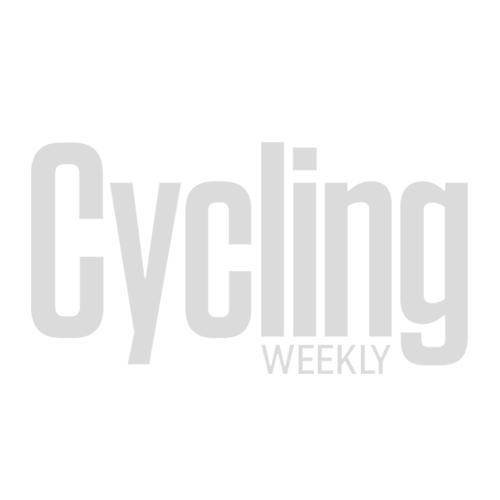How to pace your ride effectively
It might seem like tearing off the start like as fast as your can will get you a quick time in your time trial or sportive, but it reality you'll pay for it later on, pace yourself effectively and you might be able to see your times tumble...

How should you pace yourself through a time trial or sportive?
Tearing off like a bat out of hell might get you a good time for the first few miles, but as the expenditure catches up with you, you’ll pay the price later.
However, setting a leisurely pace that enables you to feel good right to the end might leave you wondering just how much faster you could have gone if you’d pushed harder earlier on.
There’s no one right answer to this question because the distance, terrain and wind conditions of an event all pay a part in determining the best pacing strategy. Now, two new studies suggest that something called ‘gross efficiency’ — basically how efficiently your muscles convert chemical energy released during aerobic exercise into forward motion on the bike — is also critical for determining your best pace.
The science
In the first study, the researchers looked at whether gross efficiency (GE) changed after time trials of different distances. To do this, cyclists completed GE tests, consisting of sub-maximal exercise performed before and after time trials of different length: 500m, 1km, 2km, 4km, 15km, and 40km. What they found surprised them.
Previously a cyclist’s GE was thought to be constant, only changing gradually in response to weeks or months of training. However, the GE of the cyclists was significantly lower immediately after the time trials compared to before.
Get The Leadout Newsletter
The latest race content, interviews, features, reviews and expert buying guides, direct to your inbox!
In the shorter time trials, the drop in GE was linear, while in the 40km time trial, it dropped linearly at first before stabilising later in the time trial.
Why does this matter? Well, a lower GE means that muscles become less efficient at producing energy aerobically, which (for a given pace) means that the proportion of energy produced anaerobically has to increase. But more anaerobic energy means more fatiguing by-products, which means that the original pace may no longer be sustainable over longer distances.
In a follow-up study, the proportion of anaerobic work was calculated in 18 trained competitive cyclists over four time trial distances: 500m, 1km, 2km, and 4km. The results showed that the rapid drop in GE over shorter distances meant that the cyclists were having to derive 30 per cent more energy from their anaerobic energy systems than had originally been calculated from pre-exercise measurements.
The bigger picture
What does this mean for cyclists seeking the best pacing strategy? Well, a steady drop in GE as distance covered increases means that a sustainable pace over, say, 2km will be even less sustainable over 10km than you might otherwise assume.
This is because fatiguing by-products will accumulate even more rapidly in the later stages of the distance as GE declines – i.e. in a non-linear way. However, once you’ve covered around 15km or so, your GE begins to stabilise, which means that if you can sustain a given pace at, say, the 10-mile mark, there’s a good chance you will be able to maintain the same pace for longer distances.
Applying the science
- For short time trial distances under 10km, the decline in GE is significant, which means you might get better results by slightly reducing your initial pace.
- Your heart rate is an excellent indicator of how anaerobic your pace is (when you start to accumulate significant levels of lactate, you’ll notice a sudden increase in heart rate). For this reason, heart-rate monitors provide better pacing feedback than speed or power meters.
- Regardless of time trial distance, in undulating conditions you should allow your effort to increase by up to 10 per cent on the uphill sections and drop a similar amount on the downhills, as research demonstrates this strategy is likely to produce a faster time (1). The same applies (to a lesser degree) in headwinds and tailwinds respectively (2).
Int J Sports Physiol Perform. 2014 Jun 6. [Epub ahead of print]
1. Int J Sports Med. 2011 Feb;32(2):132-6
2. Ergonomics. 2000 Oct;43(10):1449-60

Panic training! Maximise your last-minute sessions

Strength training for cyclists: Is it worth it?
Strength training is now a mainstay of the pro peloton, but is hitting the gym worth the time investment for

Thank you for reading 20 articles this month* Join now for unlimited access
Enjoy your first month for just £1 / $1 / €1
*Read 5 free articles per month without a subscription

Join now for unlimited access
Try first month for just £1 / $1 / €1
Founded in 1891, Cycling Weekly and its team of expert journalists brings cyclists in-depth reviews, extensive coverage of both professional and domestic racing, as well as fitness advice and 'brew a cuppa and put your feet up' features. Cycling Weekly serves its audience across a range of platforms, from good old-fashioned print to online journalism, and video.
-
 How do the pros train? Noemi Rüegg's 26 hour training week
How do the pros train? Noemi Rüegg's 26 hour training weekWinner of this year’s Tour Down Under, the EF Education-Oatly rider is a climber whose talent is taking her to the top
By Chris Marshall-Bell
-
 Save £42 on the same tyres that Mathieu Van de Poel won Paris-Roubaix on, this Easter weekend
Save £42 on the same tyres that Mathieu Van de Poel won Paris-Roubaix on, this Easter weekendDeals Its rare that Pirelli P-Zero Race TLR RS can be found on sale, and certainly not with a whopping 25% discount, grab a pair this weekend before they go...
By Matt Ischt-Barnard